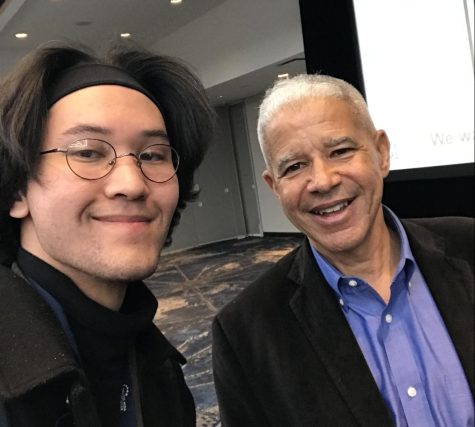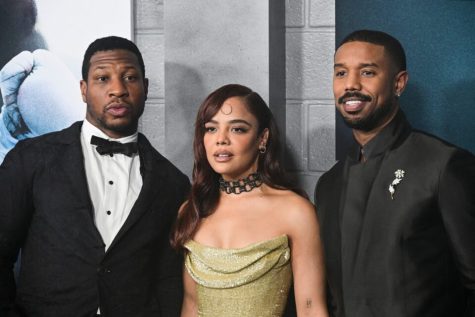The social impacts of social media
December 12, 2019
Social media has opened doors for brands and young entrepreneurs. As society is becoming more technology based, companies are starting to connect with younger social media creators to form a new kind of marketing strategy in order to sell to their consumers.
Instagram is one of the highly used social media applications that makes it easier for big name brands to collaborate with famously known accounts, also known as social media influencers, to create content in multiple ways to present product campaigns and market sales.
A huge part of brands working with influencers is determined by how many followers the creator has and, most importantly, the number of likes on their posts. These elements are a huge factor of success on their page.
Before Instagram became what it is today, the platform started off as a simple camera app for users.
The founders of Instagram, Mike Krieger and Kevin Systrom, first launched the app in 2010. During this time, what made the app different from other social media sites was that users were able to edit their photos with their built-in filters feature and post it on their page for their followers or even non-followers to view, like, and comment.
The fundamental aspect of Instagram has stayed the same until this day. Even throughout the years, the platform went through multiple updates. Revamping its icon from brown square camera, to the now purple to pink camera icon, tweaking out the layout, renewing the filters are just a few of the updates that have been made over the last 10 years.
Instagram also amped up the app by adding additional features, like the direct messaging service and Instagram stories, which mimicked another social media platform: Snapchat.
Before Facebook acquired the app, Instagram was in business for two years and Krieger and Systrom were not earning revenue coming in from the app. As a result, Facebook bought the app in 2012 for nearly $1 billion. They initiated sponsored posts to help create revenue. By allowing sponsored posts, it allows brands to advertise and market directly on the platform.
With that being said, this not only opened the doors for companies but as well as for Instagram creators, influencers and more.
Since the launch of Instagram, it has been the second largest social media outlet, right next to Facebook. Once Facebook allowed sponsored posts, it was important for brands to utilize the platform for their own benefit and start partnering with popular influencers.
Content creators and social media influencers are significant to brands because they help expand their business by presenting their products online through content marketing.
“[Influencers are] users who have an established credibility and audience, who can persuade others by virtue of their trustworthiness and authenticity,” according to Pixlee, an online platform that helps influencers and brands to create aesthetically visual content as marketing.
There are many different types of influencers including beauty, fashion, fitness, internet personality, adventure, travel and more. While looking for the perfect influencer for their campaign, brands also look into the amount of followers they have and the engagement they receive on their posts.
The ‘like’ feature on Instagram is essential, especially to those who have built their business through the app. The like count is an original feature that the app came with when it first launched. The more popular they are the more they will likely bring in money for the company.
An influencer’s popularity can be shown through how many followers they have. However, though it appears they have 100,000 followers, there is a high chance that they are fake accounts, robots or the influencer have bought their followers.
“Companies pay based on likes and [many] influencers rely on social media [as an] income to live, [if it’s] their only source of income,” explained Karina Lynn Kho, a popular former Youtuber with 150,000 subscribers and who is still an active member on Instagram with 13,000 followers.
The removal of the like feature is a controversial topic. Some view this update as a positive change.
“Companies can reach out to people whose content aligns with that they are looking for and not just looking for someone with the most likes on their [content],” stated Kho.
However, the downside is that it can create stressful experiences for some users, which is why Instagram removed the like count feature in the beginning of November.
The decision to remove the like count feature on Instagram was to give influencers a ‘less pressurized environment’ and ‘feel less like a competition,’ reported Megan Graham from CNBC, the Consumer News and Business Channel.
Though Instagram is the second largest social media platform, it is also one of the worst social media outlets for user’s mental health. The app has been connected with depression, anxiety and self-esteem, according to Olivia Ovenden from Esquire, a well-known American magazine.
By removing the number of likes, it will create a healthy atmosphere for users by transforming back to the foundation of what Instagram was when it first launched.
Users should be able to “focus on the photos and videos [they] share, not how many likes they get,” quoted by Ovenden from Adam Mosseri, the CEO of Instagram.
“Influencer’s pages would be more organic. Less pressure to post only things that will get a lot of likes,” briefly touched Kho during an interview.
Influencers who have built their career through social media have curated false lifestyle goals and body appearances that other regular users cannot ideally achieve, which is one reason why Mosseri decided to remove the like count.
Stephanie Easton, PhD Researcher at the University of Edinburgh, United Kingdom, and along with her fellow colleagues, has done a study and written an article back in 2017, “Young People’s Experiences of Viewing the Fitspiration Social Media Trend.” In the article, their objective was to study the “negative effects on psychological wellbeing with fitness gurus Instagram page.”
Now, the purpose of a fitness influencer on Instagram is to help users to be more motivated and illustrate a healthy lifestyle habit.
However, in their study, they have concluded that women were frustrated and annoyed rather than feeling motivated and inspired while viewing a fitness guru’s page on Instagram.
The negative response stems from fitness influencers putting out “unrealistic and untrustworthy content”, as stated in Easton’s article. his is shown through their extreme dieting and workout routines that is impossible for a regular user to follow.
This study can also be applied similarly to multiple social media influencers.
“Once I got more into photography and started posting my product more, I was curious on how many likes I can get. After posting a photo I would consistently check on my page to see how many people are liking it or viewing it. It started to become unhealthy,” confessed Geremiah Lago , a CSUEB student who uses his platform to gain popularity from his photography.
In the meantime, the social media app will continue to keep like counts on private and the CEO of Instagram is keeping an eye out on how the change will impact user’s mental health.















